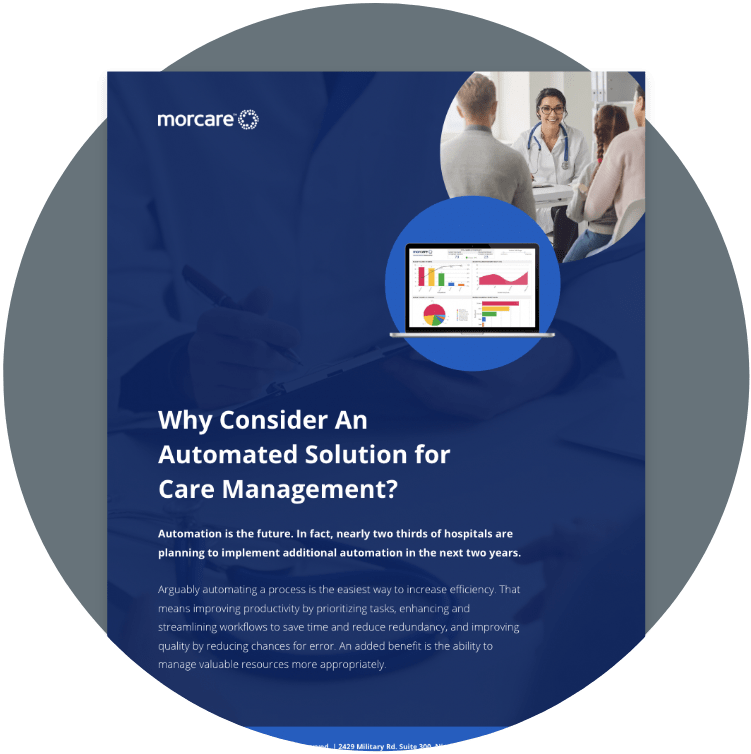Post-discharge referral management is complicated work. Patients, care providers, discharge planners, referral partners, and patients’ family members and caregivers all must work together to determine the best course of action. Disagreements, workflow challenges, and unforeseen complications can all disrupt the process.
When a referral management team operates smoothly, patients benefit. Patient satisfaction, safety, and health outcomes are all improved when discharge planning is efficient and aligned with patient needs.
For discharge planners and referral managers, streamlining operations helps with reducing duplicate tasks, speeding up processes, and ensuring clear, prompt communications with patients and partners.
Streamlined, data-driven referral processes lead to fewer readmissions, better continuity of care, and a stronger referral network. Efficient referral management also leads to cost savings for healthcare organizations, thanks to improved administrative efficiency.
In the sections below, we’ll share five focus areas for improving the efficiency and success rates of your organization’s post-discharge referral system.
Five Tips for Effective Post-Discharge Referral Management
Centralize Referral Information
For effective referral management, it’s important that an entire healthcare team has easy access to patient information pertaining to discharge planning. This involves the use of a single platform that serves as a centralized hub for record updates and data storage. When implemented effectively, a centralized platform reduces duplicate tasks, promotes comprehensive record-keeping, and ensures timely follow-ups with patients and referral partners.
Automate Workflow Processes
According to a report by Zapier, 94% of American workers say that their jobs involve the completion of time-consuming, repetitive tasks. In healthcare, many of the most time-consuming and error-prone tasks involve data entry. Thus, data entry is a major focus area for medical software developers who are focused on automation. When employed successfully, automation is a tool for reducing manual effort, enhancing operational efficiency, and improving data accuracy.
Given the substantial administrative workload associated with discharge planning and referral management, there are valuable opportunities for automation in these areas. Using healthcare management software that includes a helpful discharge planning module, discharge planners can automate repetitive tasks and streamline coordination among referral partners. Automation can be used to simplify data entry, send alerts and notifications, and facilitate data transfer with minimal manual effort.
Prioritize Patient Education and Engagement
A helpful post-discharge care plan emphasizes patient education. Along with referrals and clear instructions for continued care, it’s important to provide information that clarifies the importance of that care. Patients should also receive educational guidance that empowers independent wellness and equips them to continue making wise choices regarding their future treatment and care.
Discharge planning should involve special accommodations for areas such as:
- Behavioral health
- Social work
- Disability
- Elderly care
When circumstances are present that may cause obstacles to continued care, it’s essential to take extra steps to ensure that a discharge plan is understood and accepted. The best way to improve compliance is to encourage patient engagement, i.e. active participation in planning and treatment. Patients should be encouraged to ask questions and share in decision-making to ensure that they proceed with a discharge plan that meets their needs.
Foster Collaborative Relationships with Referral Partners
A healthcare referral network is a powerful alliance that improves patient health outcomes and yields shared benefits for contributing partners. Like any meaningful relationship, a referral partnership takes time to build and requires effort to maintain.
Medical management software helps busy healthcare teams manage referral relationships. At MorCare, our morcareConnect platform streamlines referral processes and provides a secure communication portal for hospitals and post-discharge providers. Users can also employ automation for the most time-consuming aspects of referral procedures.
Continuously Monitor and Evaluate Referral Outcomes
As with any healthcare management process, post-discharge referrals involve follow-ups, monitoring, and evaluation. To properly monitor and evaluate referral outcomes, it’s important to maintain regular communications within a referral network. Likewise, follow-ups with patients should be structured and meaningful.
To ensure continuous improvement, effective monitoring and evaluation involve the collection and analysis of data. Using medical management software, referral managers can track outcomes and compile results as data sets. Simple analytical processes can lead to actionable insights into best practices, enabling providers to refine the referral process over time.
Streamline Your Healthcare Referral Process with MorCare
At MorCare, we develop medical software solutions that streamline patient transitions and help providers and patients achieve better health outcomes. Our tools are customizable, continuously improved, and developed both by and for healthcare professionals. Contact MorCare today to learn more.

